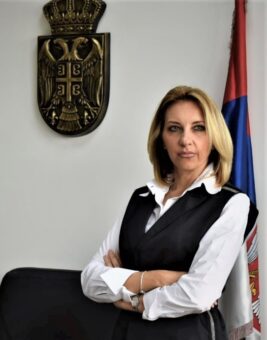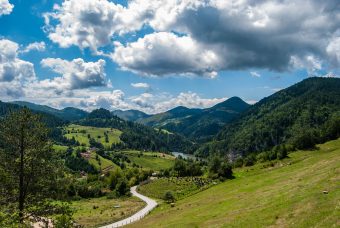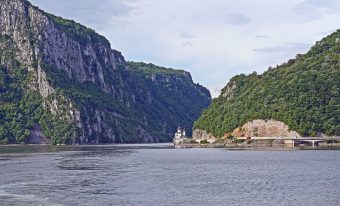
The most important step that lies ahead for Serbia in order to become a European Union member is the transfer of the regulations of this political and economic community to the national legal system, and their subsequent adequate application at all levels. On this path, the adoption of environmental policies contained in Chapter 27, whose goal is better health of the population, preservation of natural resources, competitive economy, a better quality of life, as well as the fight against climate change at the global level is one of the most demanding tasks.
In addition to harmonizing legislation and passing numerous laws, we need to reach all standards that ensure successful environmental protection, an adequate fight against climate change, as well as efficient waste management and control of greenhouse gas emissions. Although we are no longer at the very beginning, we still have a long transition road ahead of us. The Green Agenda for the Western Balkans and the European Green Deal are of great importance both for Serbia and the countries that are currently in front of “the gates” of the European Union and are moving towards fulfilling the goal of making Europe climate neutral by 2050. We spoke with Sandra Dokić, Assistant Minister for Environmental Protection, about the changes that await us regarding environmental protection, waste management and conservation of natural resources.
EP: The negotiating position for Chapter 27 was adopted in January 2020. How is the accomplishment of set goals going?
Sandra Dokić: Considering that more than one-third of the EU’s acquis communautaire relates to the environment, apart from the harmonization, fulfilling the set standards requires extremely large investments in the coming period which, according to estimates for some environmental sectors such as water, waste and air, amount to around 12 billion euros. Because of all this, we can say with certainty that this is one of the accession chapters for which we will need a lot of time, commitment, and the active participation of the public and private sectors, as well as the citizens themselves, in order to reach the set standards.

For the sake of complete transposition of EU directives into our legal system, we need to pass around 80 different regulations (laws and by-laws), but we must be aware that EU regulations are constantly changing too and that requirements and standards are being improved, so we are in a process of constant monitoring of changes and harmonization. A very topical segment, such as climate change, is a great challenge for us and we have to fulfil a multitude of obligations that we are facing for the first time. In March of last year, the Republic of Serbia made a big step in this direction by adopting the Law on Climate Change, and we are currently working hard on preparing relevant by-laws.
The Law on Climate Change establishes certain obligations for the industry and energy sectors in the shape of a system for monitoring, reporting and verification (MRV) of greenhouse gas emissions (GHG) in industrial and energy facilities and the air transport sector. This specifically means that we will have information on national GHG emissions not only at the sectoral level but also in industrial and energy facilities, such as EPS, NIS, ironworks, cement plants, heating plants (above a certain capacity) and others. Plants above a certain capacity will have the obligation to submit an application for obtaining a greenhouse gas emissions permit and a monitoring plan, i.e. to calculate emissions (according to established methodologies), as well as to submit emission reports verified by an independent verification body recognized by the Accreditation Body of Serbia. Permits for GHG emissions, for all existing as well as new plants, will be issued by the Ministry. Establishing this system is a prerequisite for entering the EU Emissions Trading System. We have demonstrated our commitment to this segment and our ambition to contribute to the reduction of global warming on a realistic basis by the fact that in August, the Government, following the Ministry’s proposal, adopted the National Determined Contribution (NDC), which stipulates the reduction of GHG emissions by 33.3 percent by 2030 in compared to 1990.

EP: With the help of UNDP, you also created a circular economy roadmap for Serbia. What does this document stipulate?
Sandra Dokić: The Ministry of Environmental Protection is the umbrella institution for defining the strategic circular economy framework, which is why in 2020, as part of the UNDP project “Circular Economy Platform for Sustainable Development in Serbia”, it created the Circular Economy Roadmap for the Republic of Serbia. This is the first document of its kind in the region and it was modelled after developed EU countries. The document provides guidelines for the development of a modern, resource- and energy-efficient circular economy in our country. In 2020, an Ex-ante analysis of the effects of the circular economy was drafted. The analysis concluded that the circular economy, as a multi-sector topic, needs a separate public policy document to define the relevant strategic framework. Following this conclusion, a proposal for the Circular Economy Development Programme in the Republic of Serbia for the period from 2022 to 2024 with an Action Plan was prepared. This public policy document has been submitted to public discussion and we expect its adoption after the formation of the new government. The programme’s overall goal is to create a stimulating environment for the development of the circular economy to support the green transition.
The measures and activities that are defined through five special goals will secure support to the economic sector in the transformation to a circular business model and local governments in the creation of circular communities, while the waste management system and the use of green public procurements and voluntary instruments will be improved. There will also be special emphasis on raising the awareness of the interested public and educational institutions about the circular economy concept. All this will contribute to establishing the foundation for the transition to the circular economy.
EP: You actively participated in the implementation of the Circular Economy – Nordic Experiences project. How applicable are the experiences of developed countries in our circumstances?
Sandra Dokić: The goal of the Circular Economy – Nordic Experiences project, which was implemented by Finland, Sweden, Norway and Denmark, was to convey experiences and examples of good practice to the experts in Serbia by organizing a series of conferences in which experts from the Nordic countries. This was also an opportunity to highlight the benefits of the circular economy, as well as the challenges that these countries faced in the previous period. The circular economy is considered a great opportunity for a green transition, because the application of this concept saves resources, encourages innovation, reduces pollution, creates new jobs and increases competitiveness. Waste management was one of the areas that got the most attention at the mentioned conferences. There is no universal way to transition to the circular economy, as each country has its own idiosyncrasies and needs to find its own model that will be efficient and sustainable.

Nevertheless, it was good to hear from Scandinavian experts that achieving circularity at their level requires time, significant investments, great patience and commitment. The result is a healthier environment and that waste can be turned into both a resource and money. Despite the long transition process, it is encouraging to know that there are good practice examples in our country too, both in the economic sector and local communities. These circular economy pioneers have recognized this concept as a way to save resources and energy, and at the same time, contribute to reducing their carbon footprint, which is a very positive effect from the perspective of climate change.
EP: The Ministry has been investing a lot of great effort in the rehabilitation of unregulated landfills throughout Serbia. How far have you come with this project?
Sandra Dokić: There are about 3,500 unregulated landfills and unfortunately, this decades-long problem cannot be solved overnight. Last and this year, the Ministry allocated significant funds for the rehabilitation of 750 unregulated landfills on the territory of local governments that responded to the Public Call and received funds for that purpose. It is extremely important that waste is no longer disposed of at the location of the cleared unregulated dump, which means that locals must behave more responsibly towards the environment. However, cleaning up unregulated dumps is not the only thing that needs to be worked on. In order to fully regulate this area and establish a waste management system at the EU level, we need to build the required infrastructure and acquire the necessary equipment, which will cost around 1.2 billion euros.
In Serbia, at the moment, a lot of work is being done on establishing a waste management system in over 80 local self-government units whose projects are in various stages of implementation – from planning to construction. I also have to mention that, for the first time, our Ministry, with Minister Irena Vujović at its helm, has shown determination to completely clean up the so-called historical waste in Serbia (hazardous and non-hazardous) that was amassed in the period after the year 2000 in bankrupt factories or during the privatization process. This is the first time that such a campaign is being carried out to clean all the waste from all locations in a period of three years (2021 to 2023), which will cost 1.8 billion dinars. These activities are carried out in line with all prescribed standards under the supervision of our inspection. Considering the long period that has passed since the storage of waste, a special kind of caution is required during these activities.
Prepared by: Milica Radičević
Read the story in the new issue of the Energy portal Magazine Waste Management.



